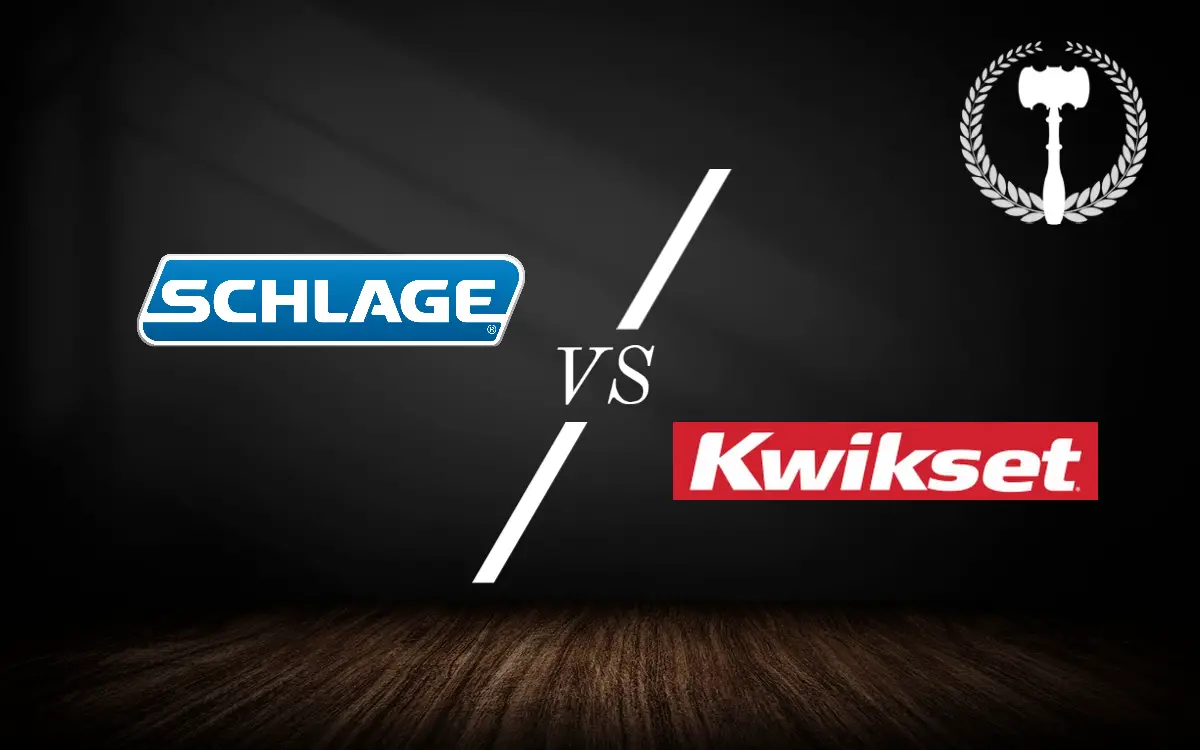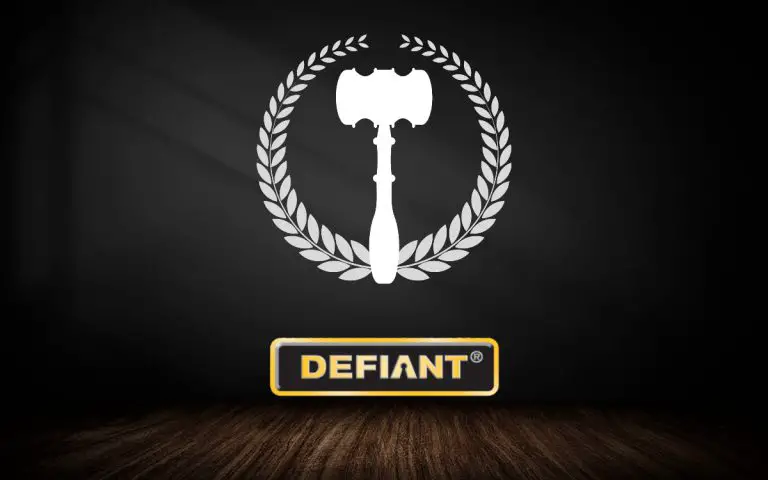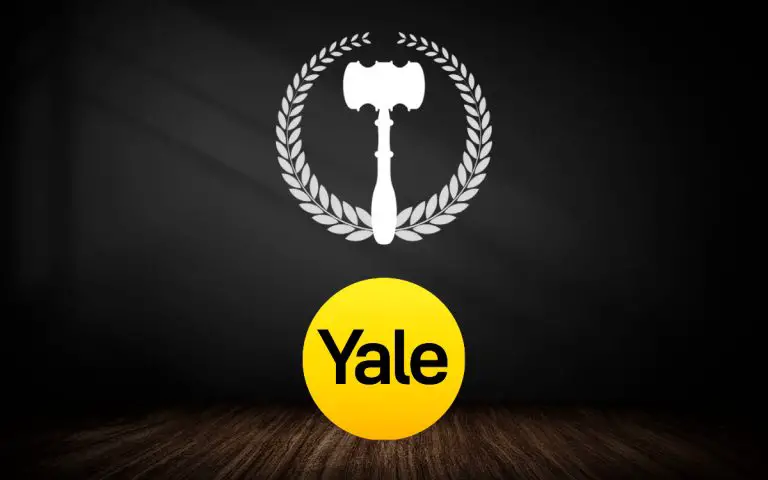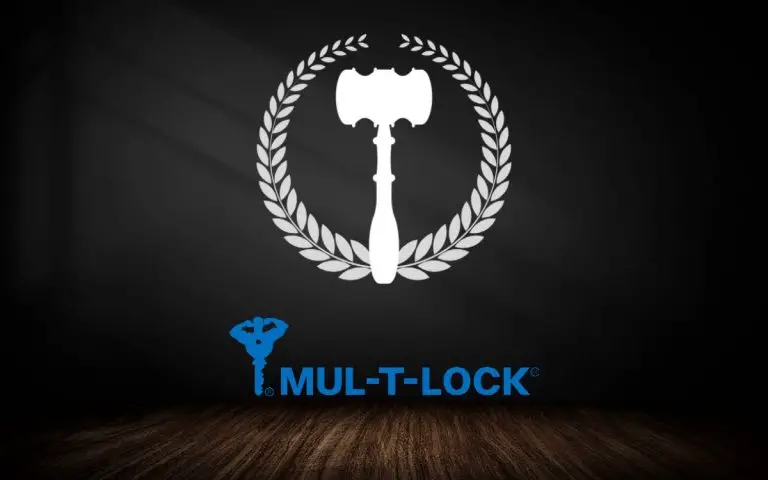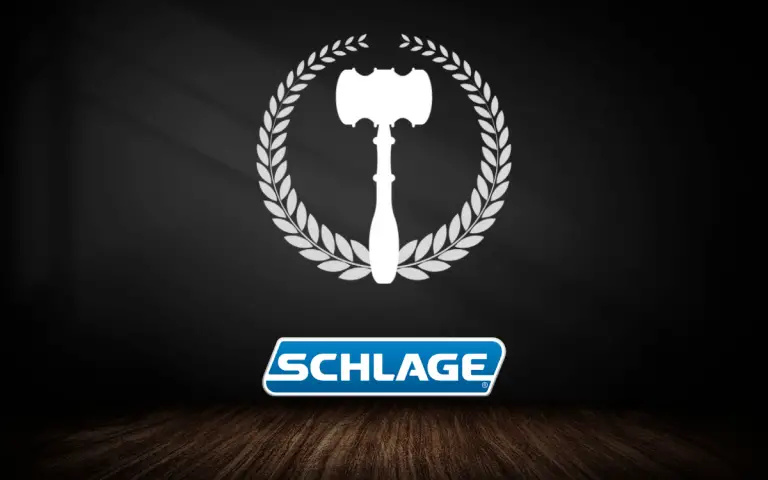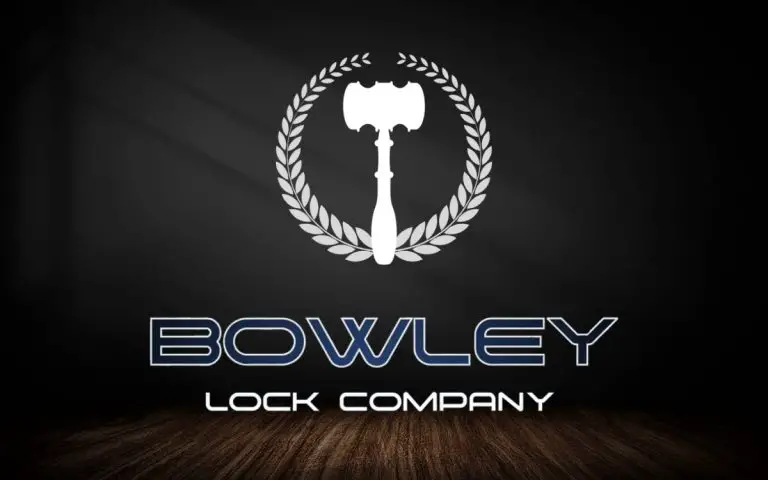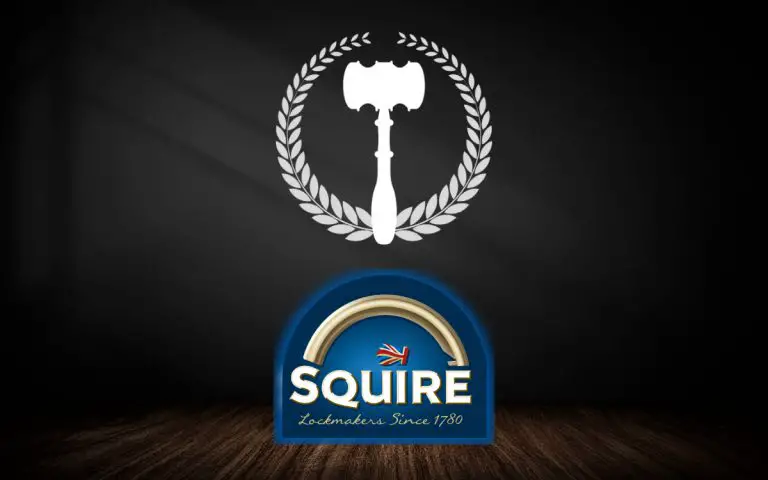Schlage vs Kwikset Locks: A Side-by-Side Comparison
After getting a new property like a house, a key concern is appropriately securing that property. For this reason, locks have been one of the most sought-after tools throughout the ages, and strong locks have gained popularity with people.
When it comes to solid locks, two brands quickly come to mind – Schlage, founded by Walter Schlage in 1920, and Kwikset, founded by Adolf Schoepe and Karl Rhinehart in 1946. While these brands may not be the only strong locks on the market, or quite frankly, even the strongest, they dominate the lion’s share of the locks market in North America.
If you visit any store in America for a new lock, there is a high chance that you walk out holding either a Schlage or Kwikset lock. It thus begs the question, which of these American lock giants provides the better lock for residential or commercial properties?
To answer this question, we have to factor in two things;
- Each of these brands makes thousands of different locks across a variety of categories
- Different metrics are used to judge the quality of any lock/locks.
To make this less complicated, we have decided to compare these two giants based on metrics for two categories of locks that they both make
- Standard deadbolt locks
- Smart locks
Since these two giants make thousands of quality locks in these categories, it should be pretty straightforward to derive a comparison using these metrics. So keep reading to find out which of these locks you should preferentially ask for when you visit a lock store. And if you’ve already got one installed, keep reading to find out how your security would fare with that.
A Brief History of Schlage and Kwikset
The Origins of Schlage

“We didn’t invent the lock, we perfected it” – Schlage company motto
Walter Reinhold Schlage was a German-American engineer who specialized in lockmaking. While residing in Berkeley, California, in 1909, he created his first patent – a lock that could turn lights on/off.
During the 1920s, after leaving his work with Western Electric Company, Schlage opened a shop in San Francisco where he worked on and patented several lock designs. In 1921, Schlage patented an advanced design of the cylindrical pin-tumbler lock. This single-plate, push-button, two-knob lock design replaced the Mortise lock.
By 1923, Schlage’s company which started with just $30, had moved to new quarters within San Francisco to begin full-scale production of revolutionary locks. Today, Schlage operates from its headquarters in Carmel, Indiana.
Early days of Kwikset

“There’s hardly a door that Kwikset can’t make more attractive or more secure…. No wonder more people trust their doors inside and out to Kwikset” – Kwikset.
Kwikset began in 1946 when German-American inventor Adolf Schoepe and his friend Karl Rhinehart designed a revolutionary tubular pin-tumbler lock. This lock was renowned for its easy installation and, as such, was named Kwikset by its makers.
By 1948, Schoepe had moved to a larger facility to facilitate mass production of his lock to meet the post-WWII housing boom. As a result, Kwikset quickly became the number one manufacturer of residential locks, culminating in its acquisition by the American Hardware Corporation (AHC) of New Britain in 1957.
Operating from California as a subsidiary of AHC, Kwikset continued to focus on improving designs of residential locks and has achieved many remarkable milestones since then.
Since their early days, both Schlage and Kwikset have become pioneers in the lock-making industry, resulting in their remarkable growth. They have also established manufacturing facilities across various countries and make countless industry-leading affordable and fashionable home security locks.
Comparing Standard Deadbolt Locks from Kwikset vs. Schlage
Deadbolts are spring-less locks that are locked/unlocked through a simple key-twist mechanism to push or retract a bolt into or from a strike plate embedded in the door frame.
Deadbolts are typically made from steel or brass, making them thicker and heavier than regular spring latch locks. However, their design is simple, and their spring-less build makes them harder to break into or pick. Thus, deadbolts are a simple, inexpensive way to secure your properties.
Both Schlage and Kwikset have been in the business of making high-quality deadbolts for years. Both companies have a variety of deadbolts in their ranks with designs and features to suit an array of individuals.
Similarities between Schlage and Kwikset Deadbolts
Deadbolts manufactured by both companies share many similarities that make them excellent choices for the home.
Deadbolts can be designed with single or double cylinders. Double-cylinder deadbolts require a key to open on both sides. On the other hand, single-cylinder deadbolts require a key on only one side. Both companies manufacture single and double-cylinder deadbolts.
Both deadbolts are ANSI/BHMA grade 1 certified, meaning that they meet various metrics for protection against forced and unforced entry techniques. In addition, both companies make their deadbolts using high-quality brass or die-cast zinc with a satin nickel finish for an added layer of protection.
Popular Schlage deadbolts include the B60 N 622 single-cylinder deadbolt, B60 N CEN 619 deadbolt, and the B62 NV 619 double-cylinder deadbolt. Popular Kwikset deadbolt models are the Kwikset 660 single-cylinder, 980 single-cylinder, and the Kwikset 985 double-cylinder deadbolt.
Schlage vs. Kwikset Deadbolts: The Differences
Deadbolts are compared based on the quality of their parts and how they can help prevent burglary. While virtually every deadbolt from Schlage and Kwikset boasts a similar design, the extent to which each feature can prevent a B and E varies. The following differences abound between deadbolts from both brands.
Strength of Lock Housing
As the name implies, this part of the deadbolt houses the central cylinder plug, the locking mechanism. Unfortunately, many burglars break into homes by drilling through the lock housing to directly expose the central cylinder plug and manipulate its working mechanism.
Because burglars have to drill through, thicker, more robust lock housing will pose a more significant challenge. In addition, if there are any spaces between the lock housing and the lock mechanism, it will be easier for the drill to pass through.
When it comes to the quality and design of the lock housing on their deadbolts, Schlage has been shown to provide more robust and thicker housings, with no hollow areas for easy access. In contrast, Kwikset uses lighter metals to make its lock housing and is designed with spaces between the internal mechanism and the casing.
Thus, Schlage offers deadbolts with higher resistance to forced entry by their lock housing designs, making them more secure than Kwikset.
Bolt Robustness
The bolt is the deadbolt component that sits on the strike plate when the door locks. It is essentially what keeps your doors secured.
To gain entry into a locked home, burglars can manipulate the bolt by picking it with a crowbar or simply kicking the door forcefully. So naturally, a longer and thicker bolt will pose a more significant challenge for burglars than a shorter, less robust one.
Schlage deadbolts are typically designed with longer and thicker bolts than Kwikset’s. Schlage’s bigger size makes them sit tightly in the strike plate, giving less room for the door to jiggle or for the bolt to be manipulated.
Presence of Drill Resistant Steel Plate
The drill-resistant plate is a thin steel plate mounted in front of deadbolts to protect the screws that hold the lock together. As the name implies, these plates are difficult to drill through, require complex removal techniques, and make the locks harder to jimmy.
Schlage deadbolts are typically designed with two layers of super-resistant plates. One layer protects the screws, and another layer protects the central cylinder. Combined, these two drill-resistant plate layers make it almost impossible to compromise Schlage locks.
Drill-resistant plates do not characterize Kwikset’s deadbolts. This makes it relatively easy to drill them open, either through their screws or cylinder.
Number of Security Pins
Deadbolts are opened through a sort of puzzle that their specified keys solve. The security pins between the cylinder and lock housing are an essential component of this puzzle. When the puzzle is successfully solved by inserting the correct key, these pins will disengage from the cylinder and lie in the interception between the cylinder and the housing.
The more security pins the lock has, the more complex its puzzle is, and the harder it is to maneuver using a faux key. For example, Schlage deadbolts typically feature four security pins instead of Kwikset’s 2 or 3. Thus, Schlage locks possess a more complex puzzle and are harder to break into without force.
Which Deadbolts are Better: Schlage or Kwikset?
As already seen, Schlage deadbolts outweigh Kwikset’s in all the metrics used for judging the security of deadbolts. Schlage’s deadbolts feature drill-resistant plates, solid lock housings, thicker and longer bolts, and four security pins.
Thus, Schlage deadbolts provide better protection against both forced and unforced burglaries. However, this doesn’t equate to Kwikset being a pushover, easy-to-pick lock. Kwikset offers robust security for residential abodes. However, it is relatively less secure when compared to Schlage deadbolts.
Similarly, Schlage locks are not 100% break-proof. These locks will eventually come off with the right tools, skills, and motivation. However, their features make them better when compared to Kwikset deadbolts.
Comparing Smart Locks from Schlage vs. Kwikset
Smart locks are an upgrade on electronic locks that allow access using keypads or touchscreen buttons. These electronic locks may be controlled using a smartphone app with smart locks technology. They may also be connected to a smart hub and controlled through voice prompts.
Since the 21st century, Schlage and Kwikset have designed high-functionality, robust security smart locks. Both makers design smart locks that are smart home compatible and controlled through mobile apps.
When comparing smart locks, the most significant features include; ease of installation, number of features, compatibility, and versatility. Both giants make smart locks that score high points using these metrics, but which stands out the most?
Similarities between Schlage and Kwikset Smart Locks
Kwikset and Schlage smart locks share many similar features. In addition, both companies offer a variety of low-, mid-, and high-end smart locks with varying capabilities to suit any class.
The following similarities abound between smart locks from both brands.
- Smartphone control: Both brands of smart locks are controllable through smartphone apps with comprehensive utilities. Through these apps, owners can remotely lock/unlock their doors, set custom access codes for trusted individuals, and receive notifications when the lock is locked or unlocked. This ensures maximum security and comfort.
- Smart home compatible: People who will typically go for a smart lock have a smart home already. Many Schlage and Kwikset smart locks are compatible with multiple smart home options like Google Assistant, Amazon’s Alexa, and Apple’s Siri. This means that you can use the voice prompts associated with these smart home platforms to control your locks rather than using the apps.
- Variety: This is a feature of their offerings rather than specific locks. Both Kwikset and Schlage offer homeowners a variety of smart lock designs and functionality to choose from. For example, you can choose between locks with handles and those without; those with physical buttons, or with on-screen keys; those with traditional keys and those that use only smart keys, etc. They both also offer locks with multiple modes of entry.
- Multiple customizable access codes: Schlage and Kwikset allow you to set as many as 25 different access codes to allow trusted individuals to access your property. You can monitor which specific access code is used at a particular time through their apps.
Kwikset vs. Schlage Smart Locks: What are the Differences?
Despite their many similarities, there are often subtle or overt differences between smart locks from both brands. These differences are often in the degree to which one feature is present in one over the other.
Both companies’ smart locks differ in the following sense.
- Built-in alarm system: Schlage locks typically have a built-in alarm system that triggers when someone tries to hack the lock. Most Kwikset locks don’t have this feature, and you will need an external alarm to get warned of possible hacks. In this regard, Schlage smart locks offer higher security.
- Security Certifications: Schlage and Kwikset are ANSI/BHMA grade 1 certified. However, Schlage smart locks are more robust and challenging to break, meaning they offer slightly more safety than Kwikset’s.
- Aesthetics: Kwikset offers a wider variety of smart lock designs. Furthermore, their locks may feature Venetian bronze, satin nickel, polished chrome, polished brass, and matte black finishes. Schlage offers a less broad range of smart locks, with the Encode™ and Connect™ smart locks being their most valued options.
- Pricing: While this may not be the most important feature on any homeowner’s mind, it is still pretty significant. In this aspect, Kwikset edges Schlage as their smart locks are less expensive and more affordable for the common folk.
Features of high-end smart locks produced by each company – the Schlage Encode™ Smart Wi-Fi and Kwikset Halo™
| Feature | Schlage Encode | Kwikset Halo |
|---|---|---|
| Alexa and Google Assistant Compatibility | ✅ | ✅ |
| Smart app control | ✅ | ✅ |
| Amazon key integration | ✅ | NO |
| Inbuilt Wi-Fi | ✅ | ✅ |
| Customizable Access Codes | Up to 100 4- to 8- digit customizable access codes | Up to 250 4- to 8- digit customizable access codes |
| Inbuilt alarm system | ✅ | ✅ |
| One-touch locking | ✅ | ✅ |
| DIY installation | ✅ | ✅ |
| Warranty | Three years warranty offered | One year warranty offered |
| Buy Schlage Encode | Buy Kwikset Halo |
The Schlage Encode™ Smart Wi-Fi and Kwikset Halo™ have similar features, making them suitable for various customers.
Schlage vs. Kwikset: Vulnerability of their locks
As we’ve already seen, both Schlage and Kwikset offer much in terms of safety when it comes to standard deadbolts. Both locks are capable of securing a property, even though Schlage locks edge Kwikset locks in this regard.

Kwikset SmartKey Deadbolts Easily Hacked
In 2013, published research showed that millions of Kwikset Smartkey standard deadbolts were easily hacked using a screwdriver and wire. These locks were certified BHMA Grade 1, and Kwikset claimed they were specifically built to be hackproof.
While displaying the hackability of the Kwikset deadbolt to viewers at a public event, Marc Weber Tobias and Toby Bluzmanis placed calls to Kwikset technical staff, who separately claimed that their smart locks were impenetrable, a reflection of the company’s philosophy in building smart locks.
“It’s very clever because the customer can easily reprogram the key, but it’s also insecure… the BHMA rating is misleading to consumers, fooling them into believing the locks are secure when they aren’t.” Marc Weber Tobias.
“With these, you cannot even put a flat screwdriver in there,” said one of the technicians interviewed by Tobias and his partner Bluzmanis. “If it were that easy to pick a Kwikset lock, they would be having us doing recalls, but there’s nothing like that. It’s business as usual,” said another technician.
However, Tobias and Bluzmanis demonstrated six different ways of hacking the Kwikset SmartKey, including using hammers and pins, screwdrivers, and bump keys.
The hacks took between 15 and 30 seconds.
Hacking Schlage and Kwikset Smart Locks
Like every connected device, smart locks are susceptible to hacking, which is a significant concern for many homeowners. Despite the convenience offered by these locks, the possibility of being burgled through a few key clicks or even being locked outside their home means homeowners have one more consideration to make when it comes to choosing a smart lock.
At DEF CON 24 in 2016, a security researcher showed that many smart locks operating on Bluetooth technology had poor security. The researcher hacked these locks through plain text passwords, replay attacks, device spoofing or fuzzing.
Interestingly, the Kwikset kevo smart lock could withstand these ‘soft hacks’ but was easily hacked using a screwdriver. The Kwikset kevo, as with most other smart locks from Kwikset, are deadbolts. Thus, the same screwdriver hack technique that worked for the standard deadbolts readily worked for them.
All Schlage smart locks have triple-A ANSI ratings, meaning they have the highest security, durability, and finish scores. Schlage claims that their smart door security is unbeatable. “If you can trust placing an order on Amazon, then you can trust your Schlage smart lock” – Schlage
However, users on forums have talked about having their Schlage smart locks hacked electronically. Still, these claims are unverifiable, and no published research has shown this happening. One video does show a simple way to hack a Schlage smart lock using RFID technology.
Locksmiths have also displayed techniques to hack Schlage smart deadbolts. However, the process is typically challenging and often involves leaving a visible mark.
Verdict on Vulnerability
Both Kwikset and Schlage locks (standard and smart deadbolts) are safe enough. Both companies pride themselves on maximum security provision and have delivered on it for the most part.
Both companies produce smart locks that withstand hacking via electronic techniques. This is mainly due to the improvement made in lock security since earlier models were usually susceptible to hacking, while more recent models withstand most attempts.
Schlage wins the battle when it comes to manual hacking. Verifiable reports have shown how easy it is to pick Kwikset locks using screwdrivers, pis, hammers and faux keys. Such reports have not been published adequately for Schlage, and everyday day consumers on forums agree that they feel safe with Schlage.
Price of Kwikset and Schlage Locks
One metric that gives Kwikset an advantage over Schlage is the price of their locks. Both Kwikset’s standard deadbolts and smart locks are less pricey than their Schlage counterparts.
The higher price of Schlage locks is attributed to their more robust materials, better security metrics, and a more extended period in the lock-making business.
However, Kwikset’s lower price makes them more affordable for ordinary folk.
Rekeying Schlage vs. Kwikset Locks
“The SmartKey is one of the features that sold me on the Kwikset. It is nice to be able to slowly replace the locks in the house and be able to rekey the locks yourself” ~ Garret, member, Ezlo community.
Rekeying a lock means changing the keys that have access to operate the locks. Rekeying comes in handy in the case of a lost or damaged key or when you need one key to open all the locks within your home. It is a simpler and less expensive alternative to entirely changing the lock.
You can rekey Kwikset and Schlage smart locks and standard deadbolts. However, the tools required and the ease of operating differ between companies.
Schlage locks have an interchangeable central cylinder that you can replace without disassembling the lock itself. This process, however, requires great skill and meticulousness, but you could still do it yourself.
On the other hand, Kwikset has a SmartKey Security™ feature which allows you to rekey the lock by yourself, quickly and easily. Using SmartKey, the rekeying process can be carried out in three simple steps, requiring zero skill.
The SmartKey feature makes it easier to rekey both smart locks and deadbolts from Kwikset than Schlage. In addition, it saves you extra cost. This should be a significant consideration when choosing between lock types.
FAQ‘s
Can I Rekey the Kwikset lock to fit a Schlage key?
The simple answer is No. This is because the keys for different locks have distinct shapes and sizes. Thus you cannot rekey one lock to match the key of another lock since the keyways do not match.
One possibility will be to replace the central cylinder of the Kwikset lock with a Schlager cylinder. Luckily, the parts of Schlage and Kwikset deadbolts are interchangeable, allowing you to replace one with the other easily.
“both Schlage and Kwikset are 100% interchangeable! I replaced my old Kwikset lock installed by the builder 10 years ago, and all Schlage parts have precisely aligned with the door. What a big surprise. I was ready to spend an hour or so aligning and adjusting, playing with chisels, files, and other tools.” ~ Virginian, member, Ezlo community
In Conclusion: Schlage vs Kwikset, what’s better?
Both Schlage and Kwikset have positioned themselves as innovative giants in the lock-making industry.
Through their standard deadbolts and smart locks, Schlage has consistently proved that they are one of the most trustworthy brands when it comes to security. Their superb quality is reflected in their relatively higher cost.
Kwikset is no pushover in the lock industry either. They offer a range of options for smart locks and deadbolts. But, more importantly, they allow people to enjoy top-level home security on a friendly budget.
When choosing between each one, consider that Schlage will offer you higher-grade protection but at higher costs. On the other hand, Kwikset will save you money but not offer as much protection as Schlage.
Also, keep in mind that requirements vary based on different criteria. For example, if you need to rekey your locks more often, it makes sense to seek a Kwikset lock with SmartKey technology. However, when protecting commercial property, security is paramount, and Schlage wins in this regard.


